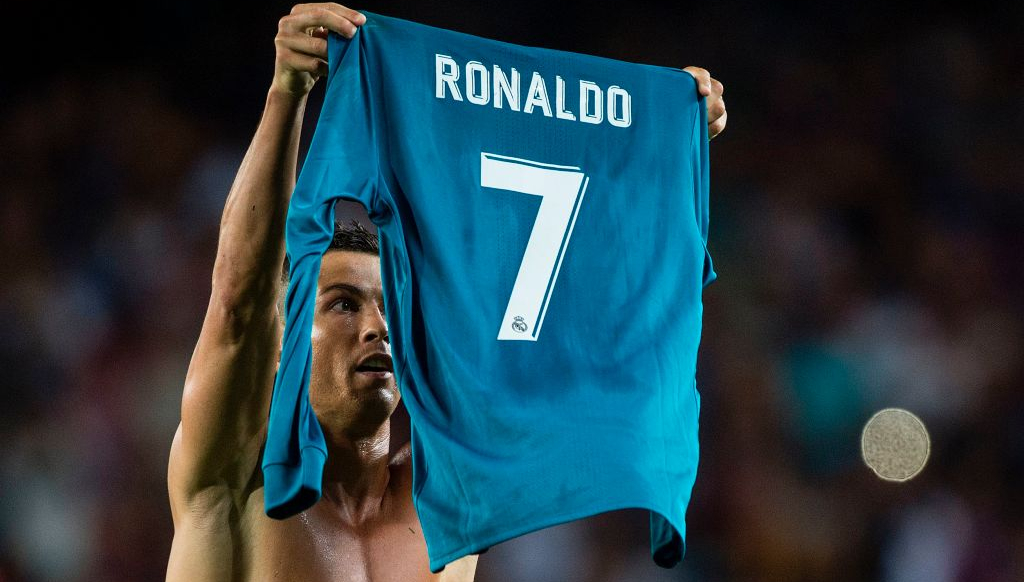
The nature versus nurture debate has long raged but in Cristiano Ronaldo we can see elements of the two at play.
Indeed, the Portuguese superstar is football’s Vitruvian Man, a physical specimen so perfectly put together you would think he was created by Leonardo da Vinci himself.
And while his genetic make-up has given him a distinct advantage during a distinguished career, as his age ascends and his body declines, the effects of nature have forced an evolution of his playing style.
After agreeing to join Juventus in a seismic switch from Real Madrid, ending a nine-year association with the La Liga giants, could we see another transformation for the 33-year-old?
From Lisbon, to Manchester and Madrid, Ronaldo’s career timeline has been hallmarked by development and change. With Ronaldo agreeing a four-year contract, what type of player are we likely going to see at the end of his deal?
To best gain a measure, we look to the past and plot the course of his evolutionary progression so far.
SEVEN STEPS OF RONALDO
SPORTING LISBON
Gawky prodigy
Sporting have a rich lineage when it comes to nurturing wing wizards. Paulo Futre, Luis Figo, Simao Sabrosa and Ricardo Quaresma are some of the luminaries but even as a 17-year-old, Ronaldo was already joining them on the road to greatness.
Of course, few expected the destination to be reached so quickly, but ironically for a player who is considered the ultimate competitor, it is two friendly fixtures which standout from his fledgling years.
The first was in 2002 pre-season when against Real Betis, Ronaldo displayed the searing speed and composure which has become a trademark.
He beat the keeper to the ball and from an acute angle outside the box, bent a superb right-footed strike into the top corner. A few days later he would make his professional debut against Inter Milan.
The second lives in infamy. A year later and now 18, Ronaldo tormented Manchester United in a friendly to mark the opening of Sporting’s new stadium.
The pace, power, balance and ability to vapourise his man were all wrapped up in the gawky frosted-tipped teenager.
But he made quite the impression and after the game United agreed to pay Sporting £12.24 million, a British record for a teenager.
MANCHESTER UNITED
Tricky teenager in development
Ronaldo’s United career can essentially be split into two very contrasting parts. Before the 2006 World Cup, he was a vexing blend of raw skill and dire judgement.
Functioning primarily as a tricky but slight right winger, his game was pure technique and agility. Physically and mentally, he was underdeveloped, though, his skinny frame matching the leanness of mind.
The stepovers and dribbling thrilled but his inconsistent end product infuriated, with showboating and overplaying superseding efficiency and effectiveness.
Across three Premier League seasons, he scored a distinctly unexceptional 18 goals in 95 games, his slalomed runs flattening opponents but rarely resulting in finding the net.
If you require an illustration of his egregious tendencies, Tottenham at Old Trafford in the 2004/05 season serves up a menu of misplaced passes, needles feints and heavy first touches.
But at the tipping point, when even Valencia were being considered as a potential destination, Ronaldo returned from the 2006 World Cup a demon.
Physical phenom
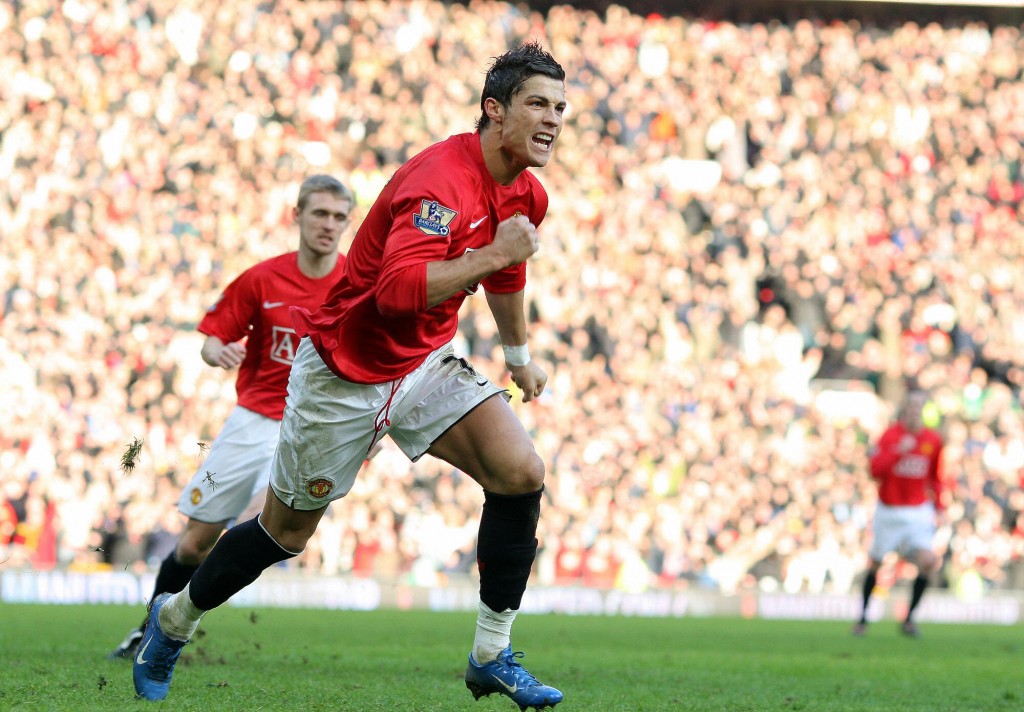
During the summer of 2006, Ronaldo underwent the type of physical transformation usually reserved for improbable gym adverts. In a matter of weeks he morphed from this wiry and awkward figure, into a hulking presence.
He was stronger, faster, could jump higher with a body bulked out for the rigours of English football. His new physicality allowed him to fizz low drives with minimal backlift and hammer free-kicks with unswerving, or rather swerving, regularity.
With the physical maturation, came mental modifications. He focused more on goalscoring and less on showboating. Instead of gluing his feet to the touchline and then dissolving defenders, he was more direct, starting out wide still but then exploiting gaps for shooting opportunities rather than aimless crosses.
He led the Premier League in assists with 14 during the 2006/07 title-winning season, adding 17 goals and then a year later led the way with a record-equalling 31 league strikes.
That 2007/08 season is arguably the best blend of Ronaldo. He was terrifying with the ball at his feet but possessed a killer instinct off it.
The hybrid forward-winger had arrived and although he was less prolific in his final season, the refinement into a hyper-focused goalscorer was already in process.
REAL MADRID
Left-wing weapon
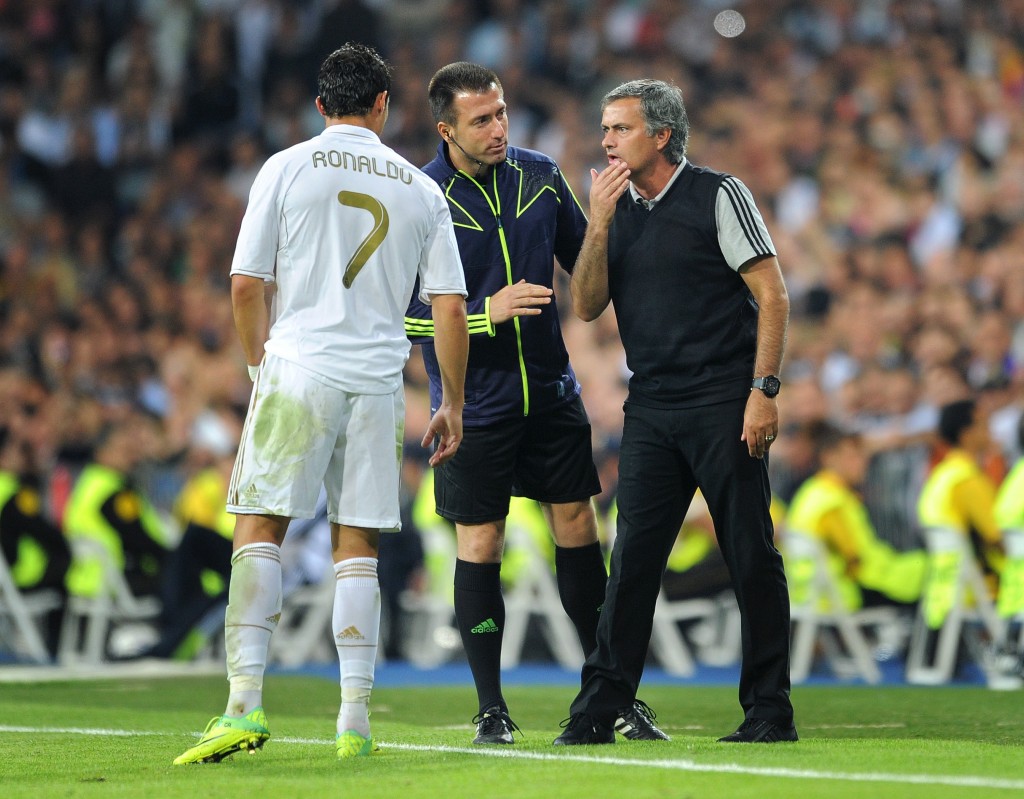
The fluidity of playing alongside Carlos Tevez and Wayne Rooney meant Ronaldo was a threat anywhere across the front line but under first Manuel Pellegrini and then Jose Mourinho, he emerged as a lethal left-winger.
Weaponised out wide, he used acceleration and trickery to cut inside and unleash the ‘knuckle-ball’ but with Mesut Ozil in the side, he also functioned as a back-post predator.
Invariably, Mourinho built the team around Ronaldo, the 4-2-3-1 a choreographed counter-attacking machine, and the Portuguese thrived.
Less flash and more bang, with fewer dribbles and movement on the ball, Ronaldo on one side and Angel Di Maria on the other, Real were ruthless as Gonzalo Higuain or Karim Benzema occupied the attention of defenders.
In Mourinho’s three years in charge, he plundered 130 La Liga goals, a testament to his improving athleticism and also shift to receiving the ball in the box or behind defenders.
With the exit of his countryman in 2013 after a disastrous season on the back of the most prosperous in terms of goals, a new phase for Ronaldo beckoned.
BBC
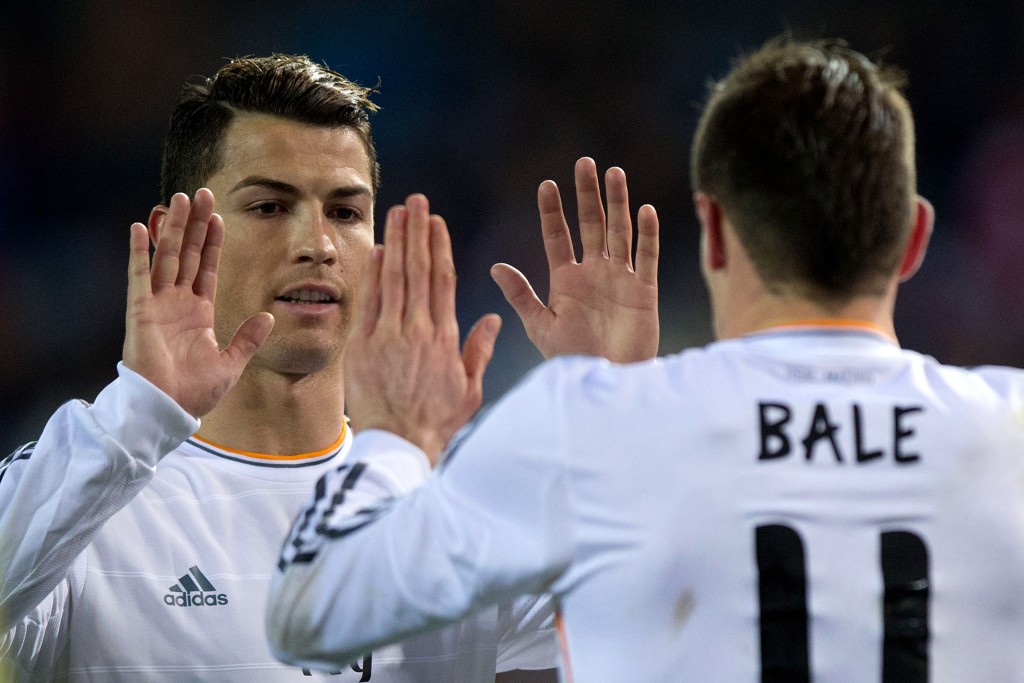
Bale, Benzema, Cristiano – welcome to the BBC era. With Carlo Ancelotti at the helm and Gareth Bale brought in from Tottenham, Los Blancos transitioned into a 4-3-3 which featured the three flying forwards.
Benzema was the linchpin in the system, his self-sacrifice to strangle his own enterprise created space for the two wingers to exploit. But although they won the Champions League together in their first season, Bale’s arrival coincided with the first signs of degradation in Ronaldo.
Indeed, the formation was framed with the two being deployed as high-flying narrow wingers but in reality, Ronaldo was playing much closer to Benzema and Bale was marooned on the right in an uneven forward line.
Although individually the Portuguese powerhouse scorched to staggering 48 league goals in 2014/15, being wed to the formation is perhaps what led to Ancelotti’s downfall as collectively they toiled domestically.
For Ronaldo, his evolution was seeing him move further forward, another step away from a player who did it all on the ball, to one who would be more impressive without it.
Static forward
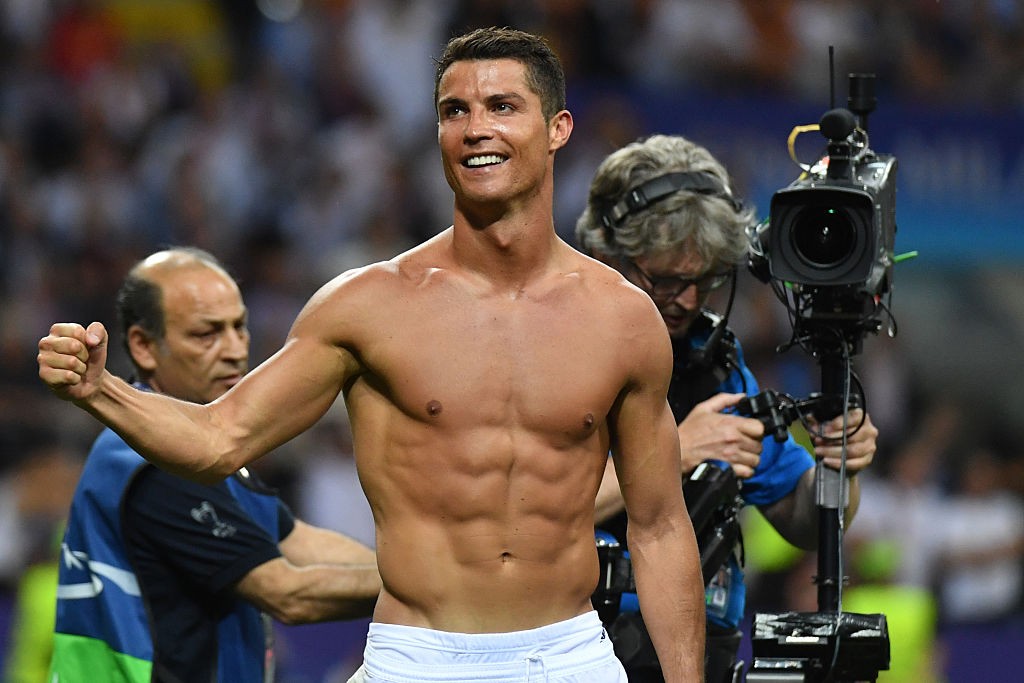
For a couple of years Ronaldo practically ditched his wide berth to occupy gaps infield and as he entered his 30s became more static.
Instead of creating something out of nothing out wide, he reserved his energy stores to play off the shoulder of the last man, prowling the edge of the box and pulling the trigger with predatory precision.
The explosion of old was losing its edge but he remained an unbelievable athlete and finisher. Less involved in build-up play, his passes were merely to recycle possession.
Under Zinedine Zidane and after missing pre-season in 2017, the final stage in his evolution was established.
The Predator
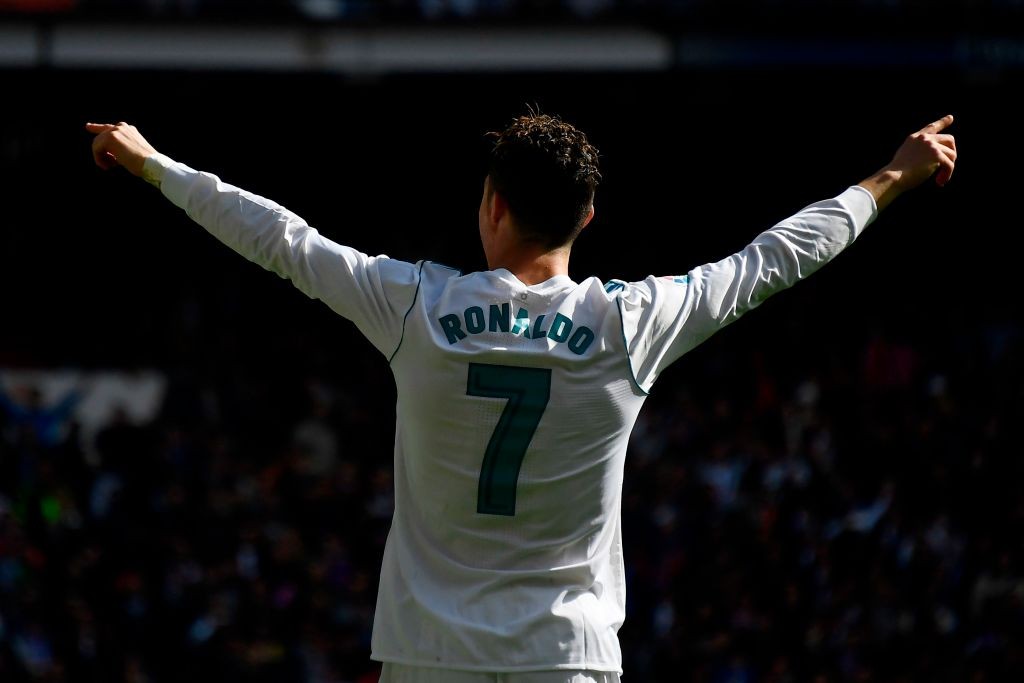
Ronaldo in the latter part of his career has become a classic No9. Whether used in a front two alongside Bale or Benzema or in a three as a lone forward, the Los Blancos icon is now a quintessential apex predator.
Isco’s rise to prominence in recent seasons has meant he no longer creates chances and exerts energy in attacking phases, but rather finishes off free-flowing moves. He played 39 times as a pure centre-forward last season and although his legs have naturally slowed down through the aging process, he is still supremely sharp.
In a slower league like Serie A, the 33-year-old and his hardliner pro-attitude will mean he can stretch out his goalscoring feats for years to come.